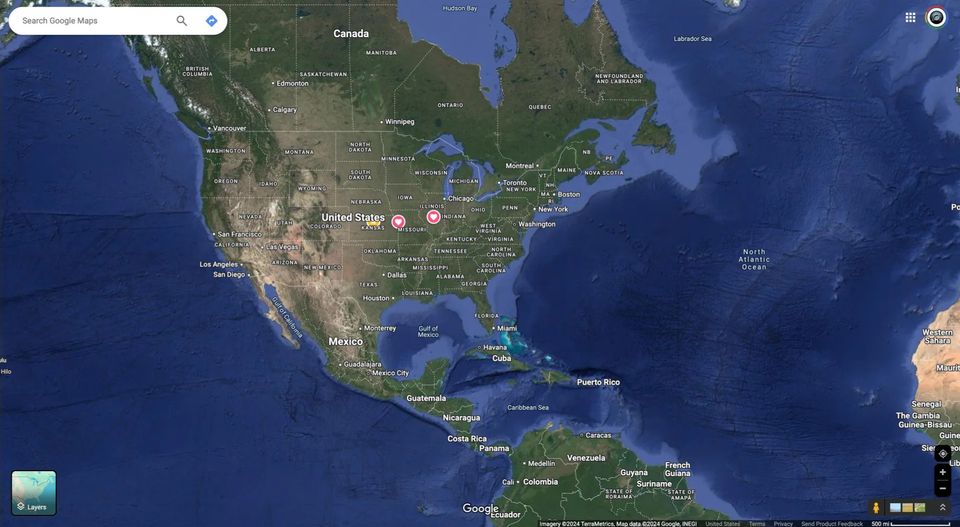
Feature - GEO Fencing
Geo-fencing for GPS AnyPlace involves creating virtual boundaries around specific geographic areas to trigger real-time actions based on location data. Using GPS, Wi-Fi, or cellular data, the system can detect when a person or vehicle enters or exits a defined area. When integrated into GPS AnyPlace, this enables personalized, location-based alerts, messaging, or tracking.
For businesses, geo-fencing can target customers within specific zones, delivering notifications or promotions as they approach key locations. For personal use, it provides secure, real-time monitoring of loved ones or assets. This technology is especially valuable for service-based operations, logistics, and marketing, enhancing customer engagement and improving operational efficiency. From strategy to execution, we'll help you take your business to the next level.
For businesses, geo-fencing can target customers within specific zones, delivering notifications or promotions as they approach key locations. For personal use, it provides secure, real-time monitoring of loved ones or assets. This technology is especially valuable for service-based operations, logistics, and marketing, enhancing customer engagement and improving operational efficiency. From strategy to execution, we'll help you take your business to the next level.


What is a GEOFence?
________________
A Geofence is a virtual defined perimeter of a defined geographical area. It is really a set of boundaries which can be used in conjunction with GPS tracking to create zones. If these boundaries are crossed, a warning event can be triggered and a message sent via email or text message to an operator, and the vehicle tracked to prevent possible theft.
These GEO Fence boundaries can defined with a touch of a button.
A Geofence is a virtual defined perimeter of a defined geographical area. It is really a set of boundaries which can be used in conjunction with GPS tracking to create zones. If these boundaries are crossed, a warning event can be triggered and a message sent via email or text message to an operator, and the vehicle tracked to prevent possible theft.
These GEO Fence boundaries can defined with a touch of a button.
Geofence GPS Fleet Tracking IFTA Tax and Border Crossing Technology
GPS AnyPlace offers maps and reporting for transport companies which operate interstate, utilizing our Border Crossing event technology feature. This information can be downloaded to an Excel spreadsheet which provides a convenient and cost effective summary to help in the calculation of your I.F.T.A. tax liability.
Your secure login and password give easy access to the GPS AnyPlace website. All information is internet-based, and once logged in you have access to a broad spectrum of reports and real time tracking of your fleet of vehicles. These provides fleet managers with all the tools they need to systematiscally make the best informed decisions possible for the wellbeing of the vehicles in their care.
I.F.TA. tax reporting is achieved through the use of a geofences, which are boundaries placed around designated zones. In the case of interstate vehicle monitoring, these geofences are set to coincide with the state border crossing points. In this way, the mileage traveled within a state can be readily recorded, and used with software such as Excel to determine tax costs.
Geofences have many other uses besides tax calculation. They can be used to monitor vehicles entering or leaving multiple areas and can be set for specific times such as evenings or weekends to ensure the moonlighting in company vehicles does not occur.
Another use is the ability to set, for instance, a frequent tracking interval in a city center, and a lower rate of tracking frequency on the open road, enabling the controller to keep a closer watch when required or desired.
Your secure login and password give easy access to the GPS AnyPlace website. All information is internet-based, and once logged in you have access to a broad spectrum of reports and real time tracking of your fleet of vehicles. These provides fleet managers with all the tools they need to systematiscally make the best informed decisions possible for the wellbeing of the vehicles in their care.
I.F.TA. tax reporting is achieved through the use of a geofences, which are boundaries placed around designated zones. In the case of interstate vehicle monitoring, these geofences are set to coincide with the state border crossing points. In this way, the mileage traveled within a state can be readily recorded, and used with software such as Excel to determine tax costs.
Geofences have many other uses besides tax calculation. They can be used to monitor vehicles entering or leaving multiple areas and can be set for specific times such as evenings or weekends to ensure the moonlighting in company vehicles does not occur.
Another use is the ability to set, for instance, a frequent tracking interval in a city center, and a lower rate of tracking frequency on the open road, enabling the controller to keep a closer watch when required or desired.

What You Can Expect When You Work with GPS AnyPlace
Geofence GPS Google Maps
________________
Customized GPS Solutions
We understand that every business has different fleet management needs. That’s why we offer tailored GPS tracking solutions to fit your company’s specific requirements, helping you stay on top of fleet performance with ease.
Expert Fleet Management Support
Our team brings years of experience in fleet tracking, ensuring you get the most out of our GPS technology, with solutions that simplify everything from route optimization to IFTA tax reporting.
Innovative Geofencing Technology
By utilizing advanced geofencing, you can set up virtual boundaries and receive alerts when vehicles enter or exit specific areas. This provides better control over your fleet and improves security, ensuring your assets are always monitored.
Proven Results for Efficiency
Our goal is to help you improve operational efficiency and reduce costs. Whether it’s cutting down fuel consumption, optimizing routes, or ensuring compliance with IFTA regulations, our solutions are designed to deliver measurable, impactful results.
________________
Customized GPS Solutions
We understand that every business has different fleet management needs. That’s why we offer tailored GPS tracking solutions to fit your company’s specific requirements, helping you stay on top of fleet performance with ease.
Expert Fleet Management Support
Our team brings years of experience in fleet tracking, ensuring you get the most out of our GPS technology, with solutions that simplify everything from route optimization to IFTA tax reporting.
Innovative Geofencing Technology
By utilizing advanced geofencing, you can set up virtual boundaries and receive alerts when vehicles enter or exit specific areas. This provides better control over your fleet and improves security, ensuring your assets are always monitored.
Proven Results for Efficiency
Our goal is to help you improve operational efficiency and reduce costs. Whether it’s cutting down fuel consumption, optimizing routes, or ensuring compliance with IFTA regulations, our solutions are designed to deliver measurable, impactful results.
GPS AnyPlace - making the most of Geofence GPS technology for fleet management
2000
Year Established
5
Team Members
20+
Industries Served
200+
Satisfied Customers

Industries We Serve
________________
See our complete list of Industries we serve. LEARN MORE >
See our complete list of Industries we serve. LEARN MORE >
Benefits of using geofencing with GPS AnyPlace:
Enhanced Asset Monitoring: Geofencing allows you to set virtual boundaries for your vehicles or assets. You'll receive instant alerts when they enter or leave designated areas, ensuring constant oversight and control over your fleet.
Increased Security: Geofencing helps protect your fleet by notifying you of unauthorized vehicle movements, reducing the risk of theft or misuse of company assets.
Improved Operational Efficiency: By tracking vehicles' entry and exit from job sites or delivery zones, geofencing helps you manage time more effectively, ensuring drivers stay on schedule and reducing delays.
Optimized Resource Allocation: Geofencing helps you track fleet performance in real time, allowing for better decision-making on resource allocation, such as rerouting vehicles for more efficient deliveries or pickups.
Fuel Savings: By monitoring vehicle routes and preventing unnecessary detours or unauthorized trips, geofencing helps reduce fuel consumption, contributing to lower operational costs.
Driver Accountability: Geofencing allows you to track when drivers enter or leave specific areas, encouraging adherence to routes and schedules, which leads to more responsible driving behavior and better fleet management.
Real-Time Alerts: You receive immediate notifications when vehicles cross geofence boundaries, enabling swift responses to potential issues, such as unauthorized movement or delays, ensuring quicker resolutions.
Improved Customer Service: Geofencing ensures more accurate delivery or service times by monitoring when vehicles enter or exit customer locations, allowing you to provide precise updates to clients and improve overall service reliability.
Compliance Monitoring: Geofencing can be used to ensure that drivers follow designated routes, which is especially useful for complying with safety regulations or contractual obligations in specific regions or zones.
Reduced Wear and Tear: By optimizing routes and ensuring vehicles stay within approved areas, geofencing minimizes unnecessary mileage, reducing wear and tear on fleet vehicles, leading to lower maintenance costs.
It's Time to Get Smart About Your Geofencing Business Strategy
Contact us today to schedule a free consultation.
BigBrother GPS Tracking Devices
Let's Talk GPS AnyPlace Geofencing
To find out more about how Geofence GPS can benefit you, contact us.





